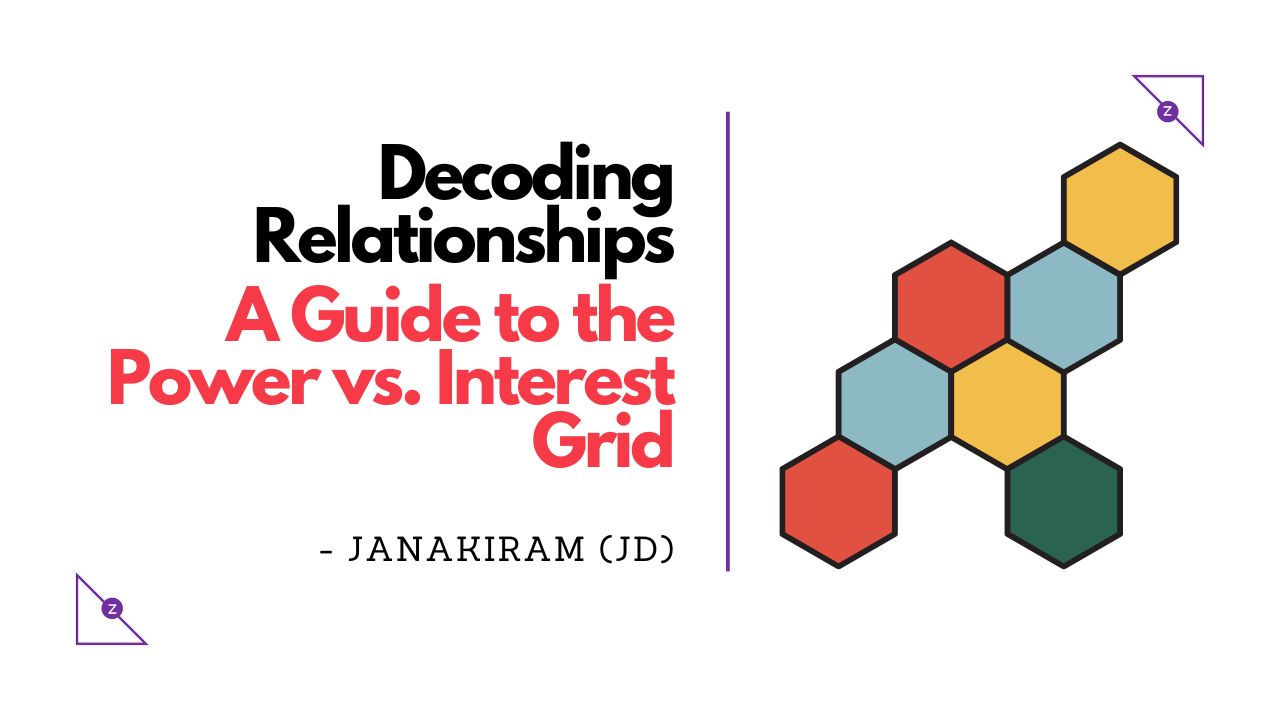In the intricate dance of Stakeholder interactions, understanding the dynamics between power and interest is crucial. Enter the Power vs. Interest Grid, a valuable tool that unveils the hidden nuances shaping the Stakeholder relationships. This blog post is your comprehensive guide to navigating this grid and harnessing its insights for more effective connections.

The Power vs. Interest Grid is a two-dimensional framework that classifies Stakeholder relationships based on the levels of power and interest each party holds. Power, in this context, refers to the ability to influence, while interest signifies the level of engagement or concern. Let’s delve into these dimensions and explore how they intersect in various relationships.
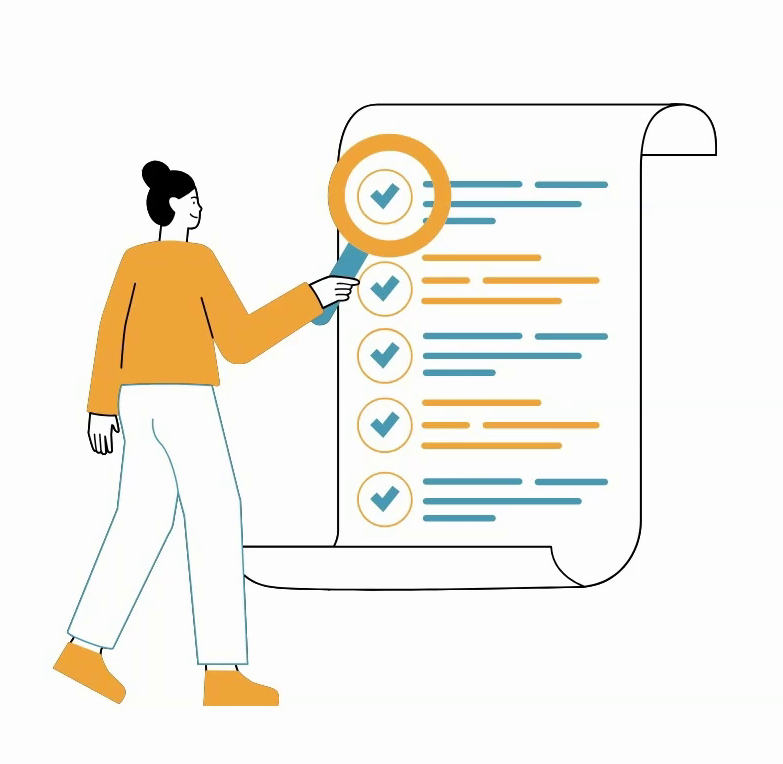
Imagine having dozens of stakeholders in your Project. It would be a humongous effort to deal with all them paying equal attention to everyone. Wouldn’t it be great if we can classify these Stakeholders and sort these classifications in descending order of priority.

Power Vs Interest grid is an excellent technique to do that. There are other techniques like Salience model and Directions of Influences. But in this blog, we will focus on Power Vs. Interest grid.
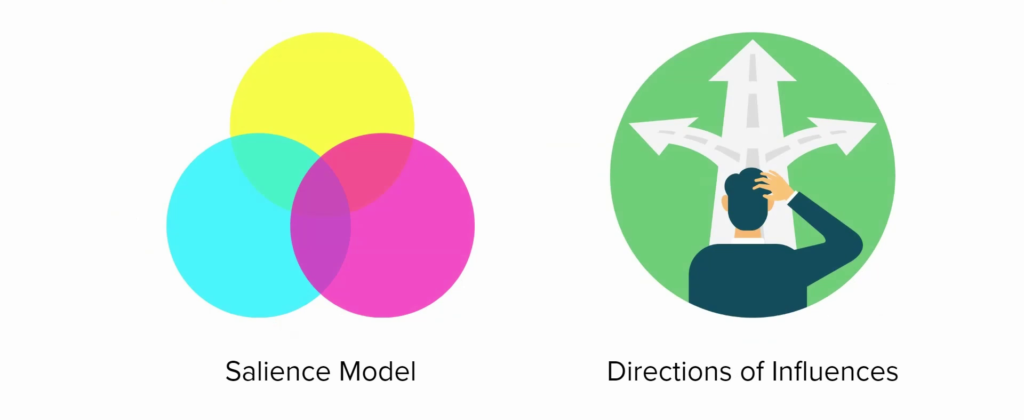
Video: Power Vs Interest Grid
Steps with Example
Let us look at how it works with an example. The entire technique can be simply put in 5 steps.
Step 1: Make the list
Before we proceed we need to have the complete list of stakeholders handy. Let’s say we have these 10 stakeholders in our project: Ramesh, John, Mark, Anita, Narendra, Peter, Uday, Jennifer, Shiva and Nicholas

Step 2: Draw a 2D graph
You need to get ready a two dimensional graph. You can do it on a plain whiteboard or use a software like Microsoft Excel.
The X-Axis of the graph represents the level of interest, a stakeholder has on the Project. The Y Axis of the Graph represents the level of power, he or she has on the project.
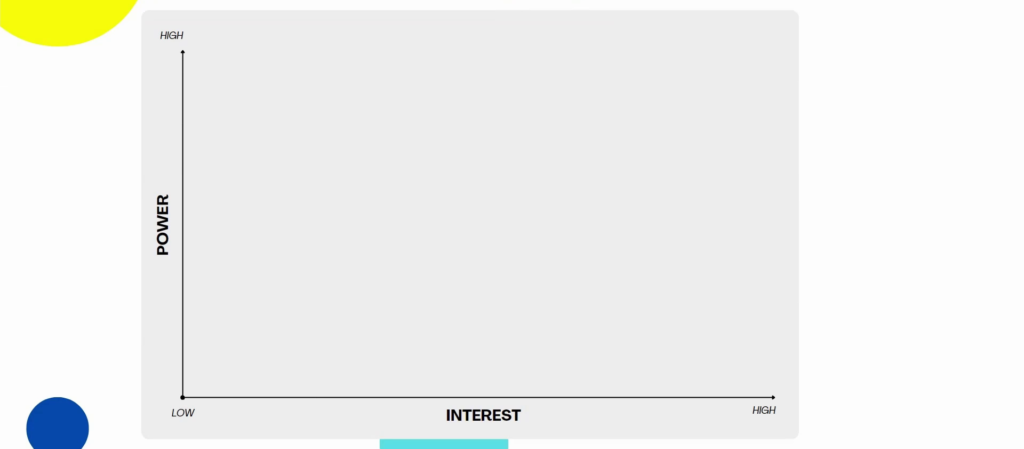
Step 3: Make Quadrants
Divide the graph into four quadrants:
- High power-High interest
- High power low interest
- Low power low interest and
- Low power high interest
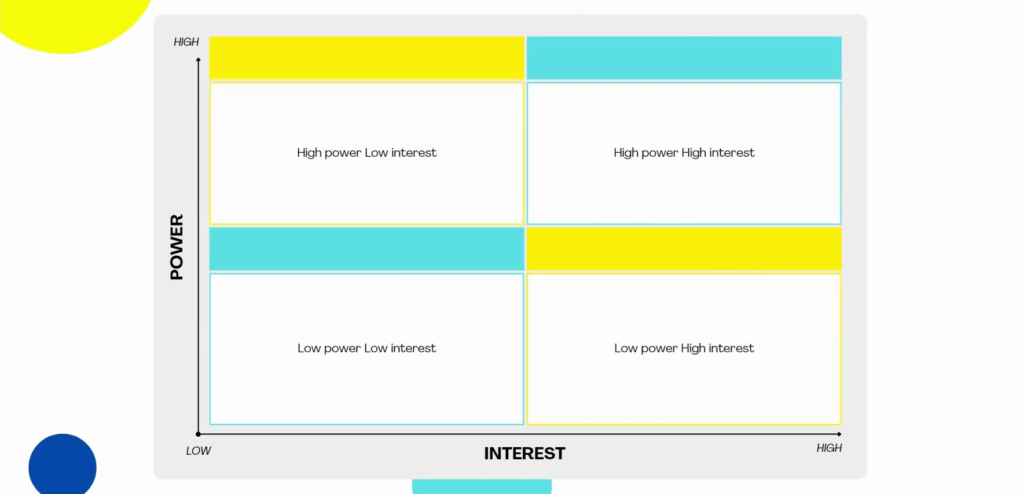
Step 4: Place the Stakeholders
We need to place the stakeholder’s one by one in respective quadrants.
- Ramesh may be a stakeholder with high power and high interest on the Project. By power we mean he might have good authority on the project like a Project Sponsor.
- Anita may be a stakeholder with low power but high interest.
- And like so you fill the rest of the graph
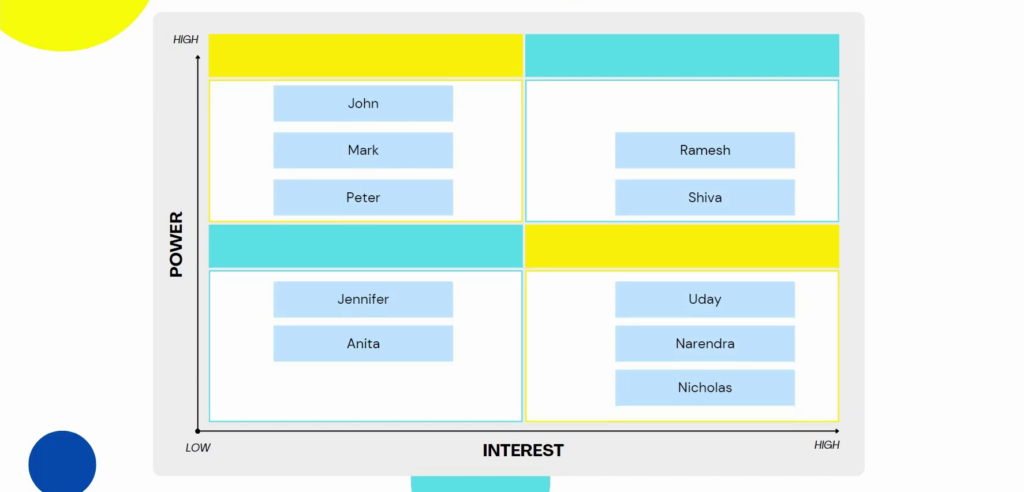
Step 5: Plan the Engagement
Now that you have classified the stakeholders, the next step is to engage them appropriately. Best practice suggests these engagements.
- “Manage closely” your High Power & High Interest stakeholders
- “Keep Satisfied” your High Power & Low interest stakeholders
- “Monitor” your Low power & Low Interest stakeholders
- “Keep informed” your Low Power & High interest stakeholders
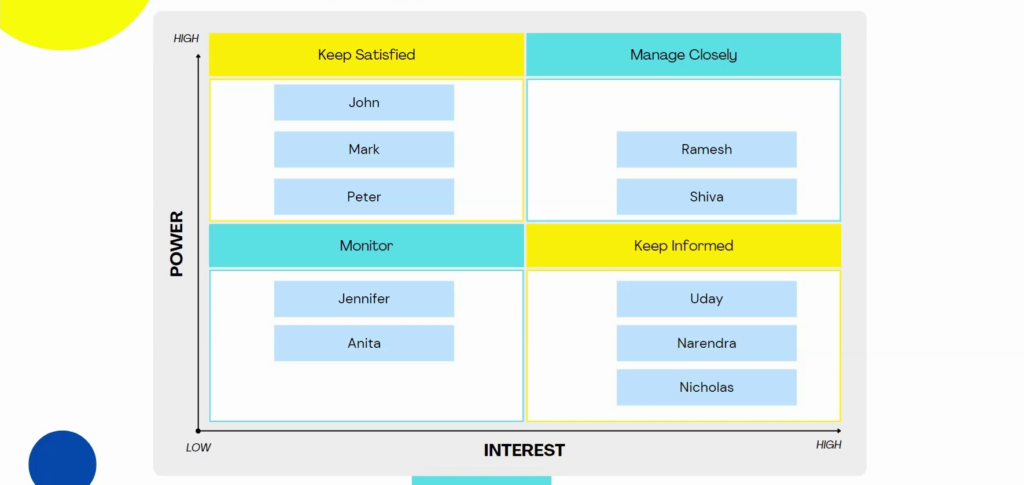
Stakeholder Engagement
Let us elaborate the Quadrants now.
High Power, High Interest
In this quadrant, relationships are characterized by mutual influence and vested interest. Think of key stakeholders in a project or engaged participants in a dynamic team. Strategies in this quadrant often involve collaboration, open communication, and shared decision-making.
High Power, Low Interest
Here, one party wields significant influence, but the other is less invested. This could mirror situations where a client holds substantial power, but their interest might be fleeting. Tactics may include periodic updates, concise communication, and focusing on outcomes to maintain engagement.
Low Power, High Interest
These relationships involve parties with a keen interest but limited influence. It might be akin to an enthusiastic intern or a passionate customer. Strategies include keeping them informed, involving them in decision-making where possible, and nurturing their interest over time.
Low Power, Low Interest
In this quadrant, relationships may be overlooked or deemed less critical. Yet, recognizing their existence is crucial. These might include routine tasks or peripheral connections. Efficient delegation, streamlined communication, and periodic check-ins suffice for maintaining equilibrium here.
Conclusion
And that is all. This should keep your Stakeholders well attended and happy. Power Vs. Interest grid is the simplest of all Stakeholder analysis tools. This is not just a theoretical framework; it’s a practical guide for anyone seeking to enhance their understanding of relationships. By deciphering the complex interplay of power and interest, you gain the ability to navigate relationships with finesse and create meaningful connections in all aspects of life.

Our PMI® PMP®-Prep Course
If interested in this course, click here
- Case study based training
- LIVE instruction 36 Hours
- Post course guidance
- Exercise per topic
- 4 Mock exams for practice
- WhatsApp group support

Our PMI® ACP®-Prep Course
If interested in this course, click here
- WhatsApp group support
- 4 Mock exams for practice
- Exercise per topic
- LIVE instruction 20 Hours
- Post course guidance
- Case study based training

JD (Coach/Instructor/Writer)
JD (a.k.a Janakiram) is a Project Management Coach, Trainer Author and Practitioner @Zaidan Consulting. He comes with around 17+ Years of experience primarily from the Software Industry. He is certified on PMI® PMP®, ACP®, Scrum Alliance CSM and Microsoft Certified Solution Developer on C#.NET. He has also authored the book “Practical Agile for Beginners”

About Zaidan Consulting
Zaidan Consulting are specialists in Project and Program Management space. Our training offerings include:
- Project Management Training
- Agile Training
- PMI®-ACP® Prep Training
- PMI®-PMP® Prep Training
- PMI®-CAPM® Prep Training
- ScrumStudy™ Authorized Training Partner (A.T.P)
Or you can contact us @+(91) 7672011471
Or Email us: contact@zaidanconsulting.com
